Michael Eastwell (@michaeleastwell) is a British born wildlife photographer who specializes in documenting conservation stories and the natural world. Up until the pandemic Michael had been pursuing a career as a race car driver, but a lack of funding and sponsorship stopped him in his tracks. He switched his focus towards another passion of his, photography. Lockdown presented him with an opportunity to get familiar with his camera and explore the incredible wildlife nearby. Within just a few years of beginning his photographic journey, Michael’s images have been awarded and published internationally. He is currently working on a comprehensive project surrounding the endangered Tasmanian devil. His camera bag takes different forms depending on what he is shooting. There are essentially three main sets of gear which he uses to cover different fields of work, whether that be his heavily photojournalistic style, his more general nature photography or his remote camera trapping assignments.
Product Preview – In This Article You'll Find:
–Sony Alpha 1
–Sony Alpha 7R IV
–Sony 35mm f/1.4 G Master
–Sony 400mm f/2.8 G Master
–Sony 24-105mm f/4 G
–Sony 50mm f/1.2 G Master
–Sony 135mm f/1.8 G Master
–Sony 24mm f/1.4 G Master
–Sony 70-200mm f/2.8 G Master II
–Sony 16-35mm f/2.8 G Master
Cameras
Sony Alpha 1: This camera continues to blow me away! It excels at everything I could possibly have a purpose for right now, whether that be speed, high dynamic range capabilities or video to name a few. The adeptness of this body seems endless and I’ve managed to capture some really special images because of its epic performance! An image that instantly jumps to mind is one of a Tasmanian devil being released by a research team. I bumped up the frame rate to the Alpha 1’s phenomenal 30fps, and whilst the moment happened in a split second, I was able to pick the perfect frame of the devil positioned just how I had envisioned. It’s important to note that with the Alpha 1’s incredible AF system all other frames were just as sharp, but for me this was the difference between a great result and a passable one.

The Alpha 1 allowing me to capture a perfect moment in time. A Tasmanian devil leaps from the hessian sack of the ‘Save the Tasmanian devil research program’ team. Photo by Michael Eastwell. Sony Alpha 1. Sony 135mm f/1.8 G Master. 1/1600-sec., f/2.8, ISO 800
Sony Alpha 7R IV: This was my main body that I used until I took ownership of the Alpha 1 a couple of years ago. Now, I use it almost exclusively for all my camera trapping needs. Whilst housed in a casing when deployed, I must give great testament to the camera’s durability, I’ve had it sit out in the harsh Tasmanian wilderness with temperatures below freezing for up to four months at a time, without a single issue. I try my hardest to frame everything perfectly, but inevitably with camera trapping as you are not there in person to take the shot, things don’t always go to plan. Given the small hit rate working around some of the endangered species I’ve been covering, I’ve managed to save a few images in the past purely because of the Alpha 7R IV’s huge 61MP sensor, allowing me to crop where necessary.

A brushtail possum sniffs a pine needle amongst a non-native forest in Tasmania. I had been hoping to capture a devil on camera but this image was a welcome surprise after a lengthy stint in the wild. Photo by Michael Eastwell. Sony Alpha 7R IV. Sony 16-35mm f/2.8 G Master. 1/250-sec., f/11, ISO 320
Lenses
Sony 35mm f/1.4 G Master: It’s tough for me to pick a particular favorite Sony lens as they are all fantastic and all have their area of purpose and expertise. From a documentary standpoint I find the 35mm f/1.4 G Master lens is attached to my camera a great deal of the time. It’s not too wide, not too narrow, it is very versatile and as a result is now my favorite storytelling lens. I prefer to use primes where possible, Sony G Master glass is the best around – super sharp, lightweight and flawless performance twinned with the Sony Alpha 1.
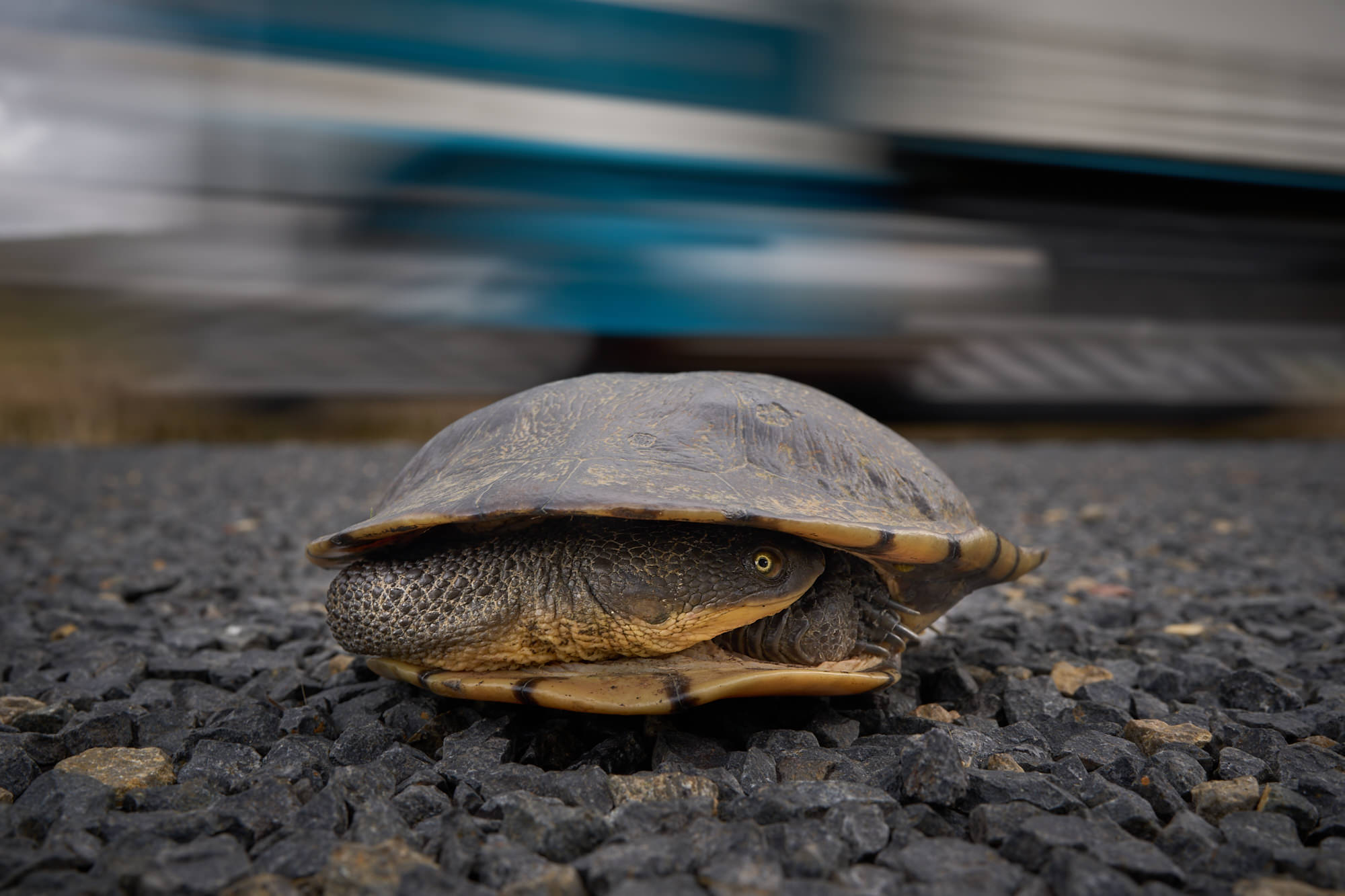
Documenting a turtle attempting to cross a busy road in rural NSW, Australia. I stopped the car to check on the wellbeing of the turtle and help it cross. I wanted to bring awareness to this scenario and fortunately had my camera combo ready to roll when this opportunity arose. Photo by Michael Eastwell. Sony Alpha 1. Sony 35mm f/1.4 G Master. 1/20-sec., f/11, ISO 50
Sony 400mm f/2.8 G Master: Buying a telephoto prime is a big decision. They are expensive and much bigger than their telephoto zoom counterparts. However, once you’ve used one you never look back. Yes, they aren’t as convenient to transport or maneuver, and under certain applications they just aren’t practical, but for the majority of the time they are totally in a league of their own! Those two extra stops of light compared to say the Sony 100-400mm f/4.5-5.6 G Master (also a great lens which I owned until I purchased this) are an absolute game changer. It not only allows you to lower your ISO but this lens also renders the most dreamy bokeh that you can only obtain from a telephoto prime such as this one.
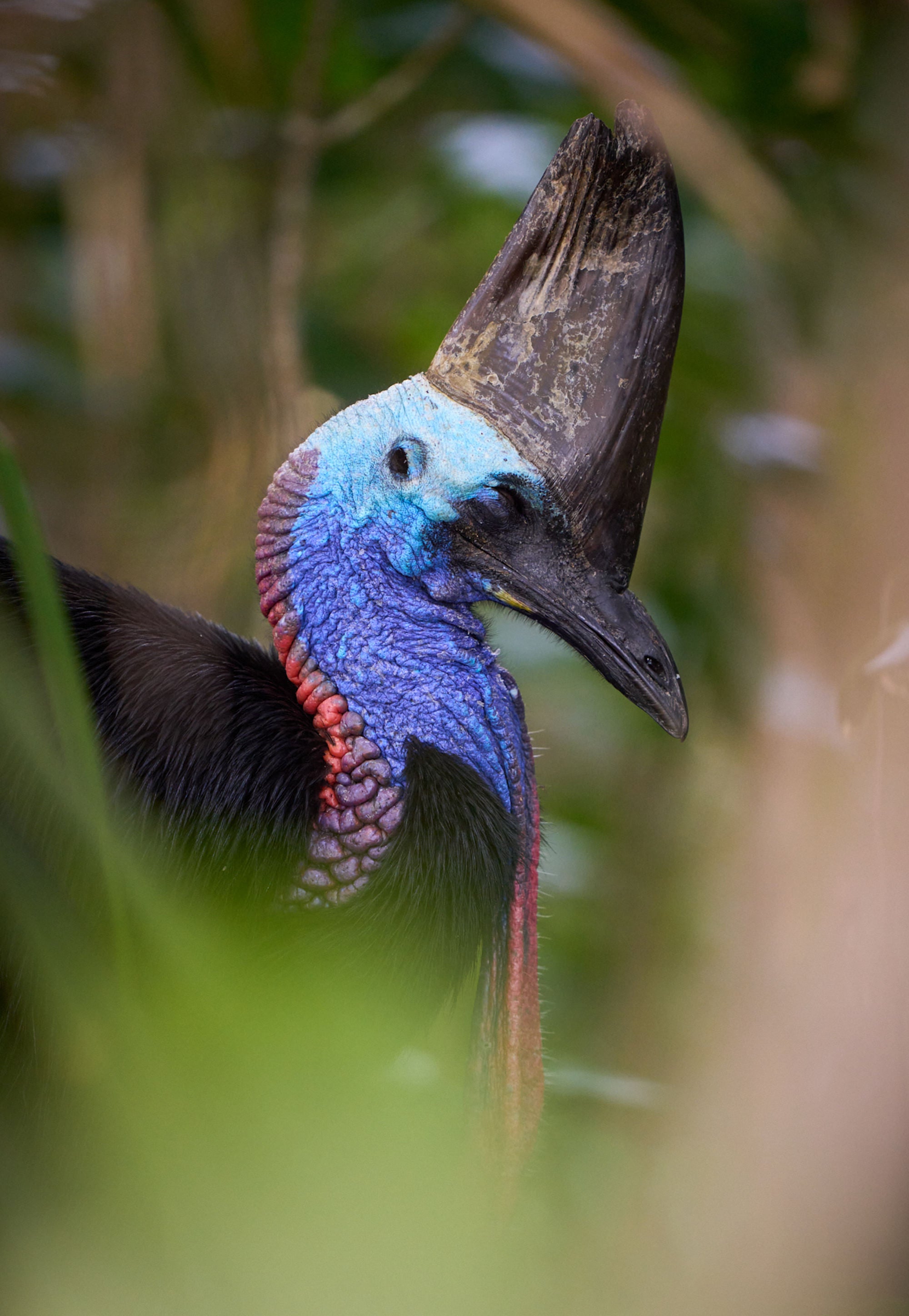
A cassowary stops to rest in the thick rainforest of Etty Bay, QLD, Australia. Shooting wide open allowed me to separate my subject from their surrounding perfectly while also enabling me to achieve the lowest ISO possible in tricky lighting conditions. Photo by Michael Eastwell. Sony Alpha 1. Sony 400mm f/2.8 G Master. 1/200-sec., f/2.8, ISO 2500
Sony 24-105mm f/4 G: The perfect camera trapping lens! As with the Sony Alpha 7R IV, I’ve tested it in some pretty harsh environments for long periods of time without it missing a beat. Most camera trapping scenes often use wider angle lenses, the flexibility of this lens allows me to easily alter the focal length in an instant with just a small adjustment inside the camera housing. As this is a great piece of glass with high versatility, I also use this for on the fly shooting when time constraints don’t allow me to switch from one prime to another.
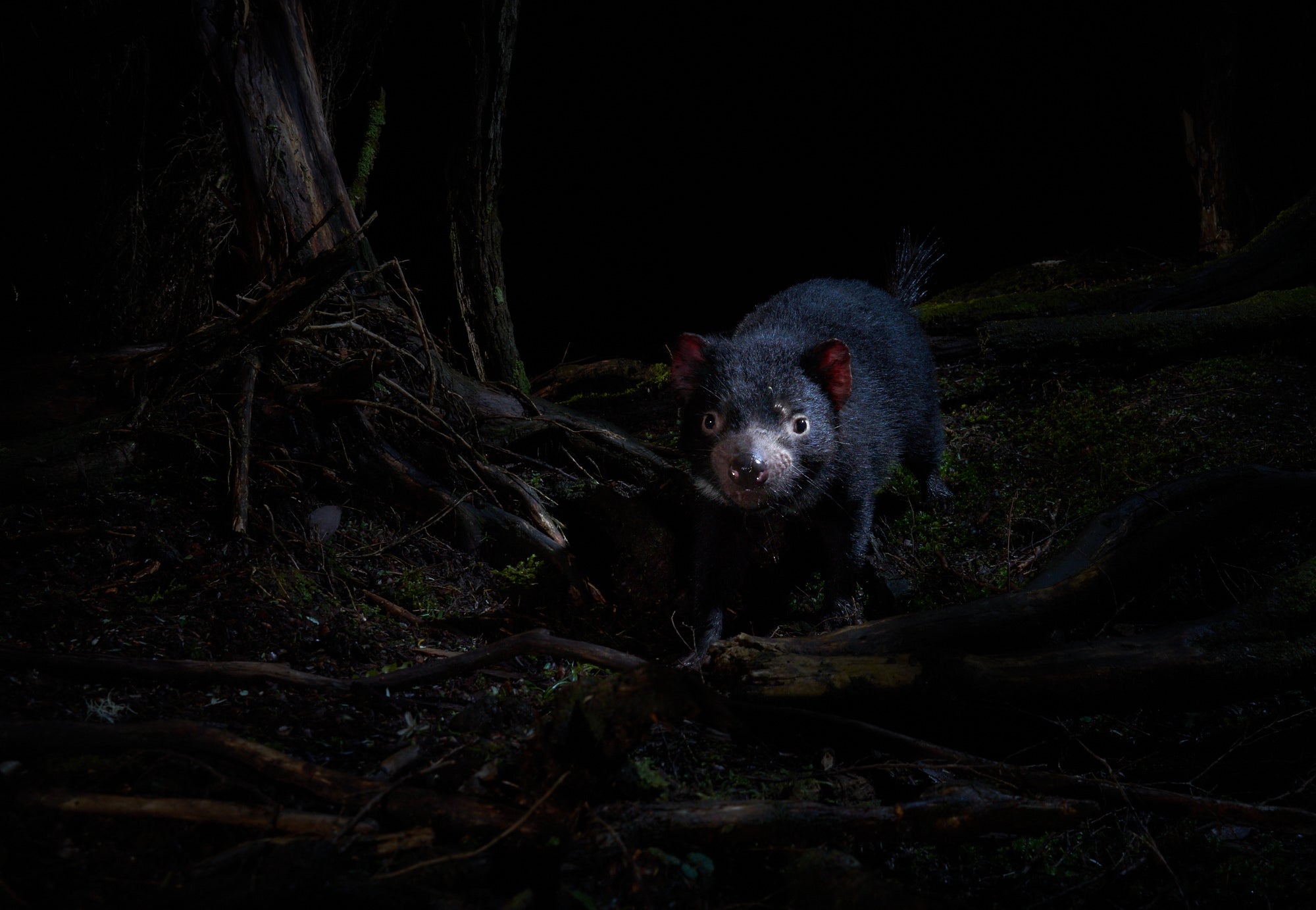
This image of a wild Tasmanian devil took three months to achieve. It’s not perfect as the devil was slightly out of my targeted position, but it clearly demonstrates the harmonious combination of the Alpha 7R IV and the 24-105mm for this purpose. Photo by Michael Eastwell. Sony Alpha 7R IV. Sony 24-105mm f/4 G Master. 1/100-sec., f/13, ISO 400
Sony 50mm f/1.2 G Master: There’s no fun in having a prime lens and not pushing it to its full capability! Shooting wide open isn’t always appropriate but given the right circumstances it can heavily shift attention to your point of focus.
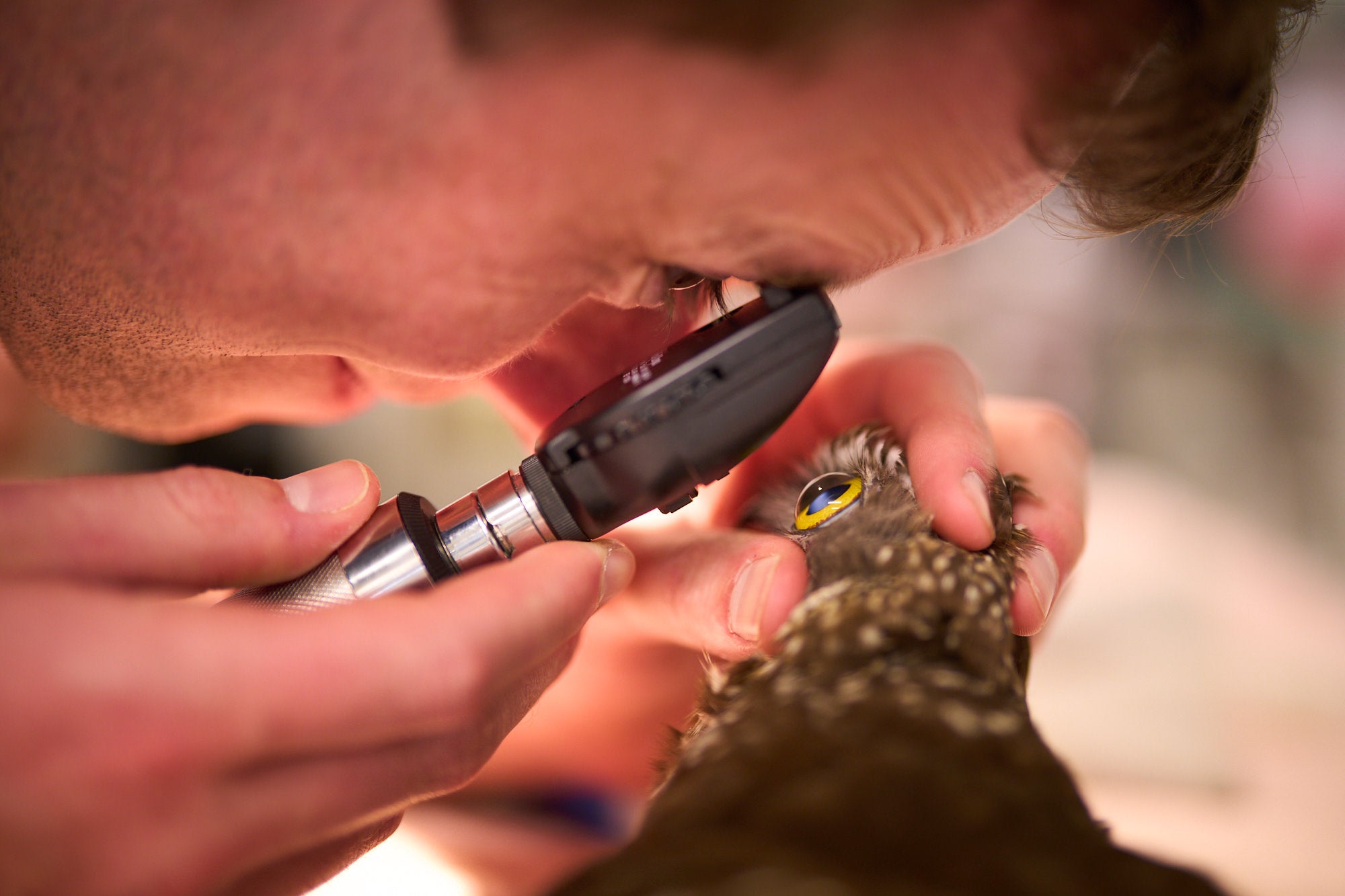
Aligning the eyes of Dr. Luke Gregory and the Southern boobook he is assessing at the Bonorong Wildlife Hospital is a perfect example of how shooting wide open can be effectively implemented to pull focus to your intended subject point. Photo by Michael Eastwell. Sony Alpha 1. Sony 50mm f/1.2 G Master. 1/250-sec., f/1.2, ISO 400
Sony 135mm f/1.8 G Master: Of all the lenses I own this has to be the sharpest, it’s absolutely phenomenal! My favorite attribute however is that it renders gorgeous bokeh. These points alone easily earn it a spot in my bag for most of my trips.
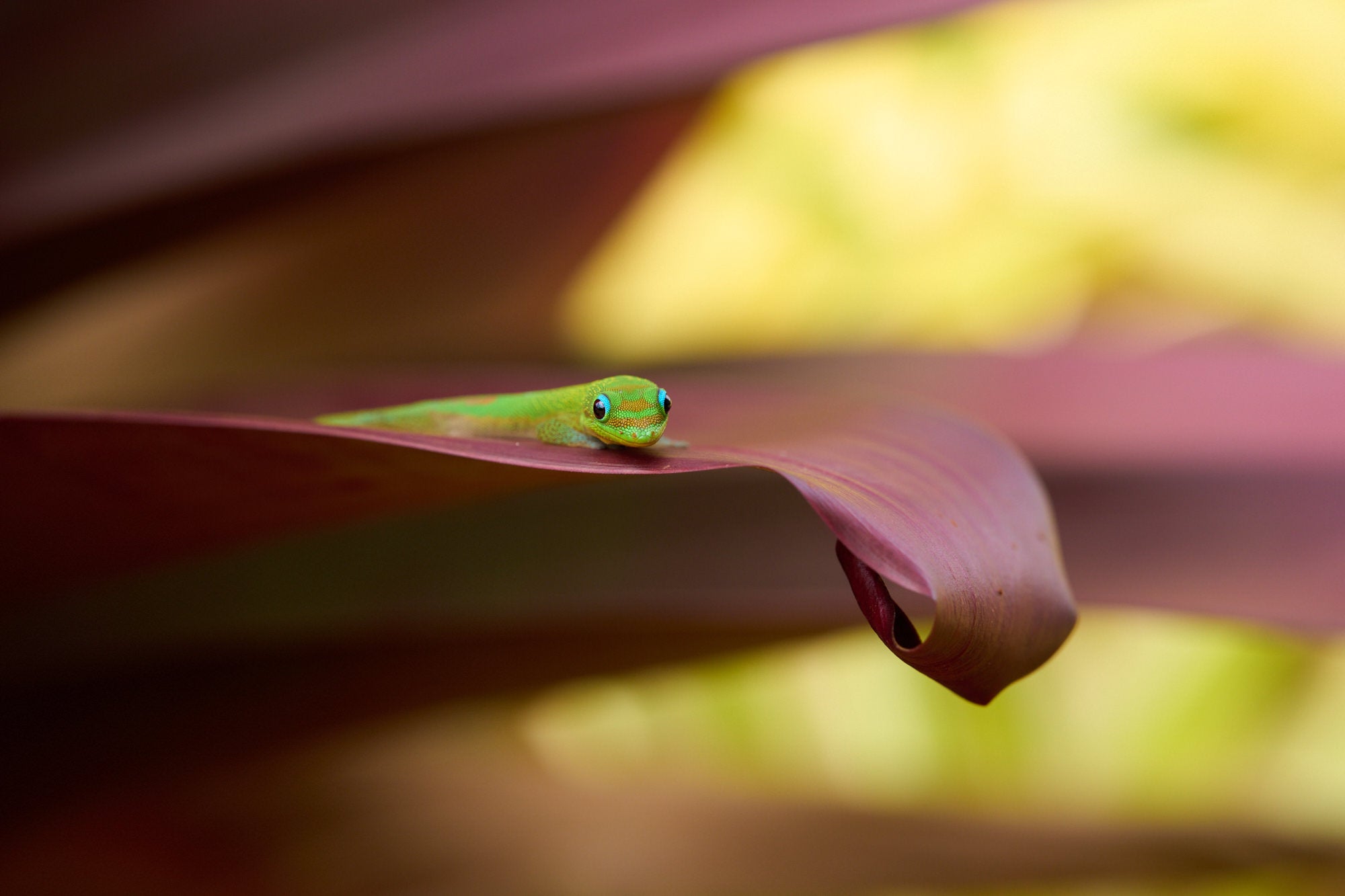
A striking, diurnal gold dust day gecko strikes a pose in a garden of O'ahu, Hawaii. Photo by Michael Eastwell. Sony Alpha 1. Sony 135mm f/1.8 G Master. 1/500-sec., f/6.3, ISO 640
Sony 24mm f/1.4 G Master: Another great documentary style lens I use for when 35mm isn’t wide enough. In the right setting I love to shoot this at 1.4 for maximum impact!
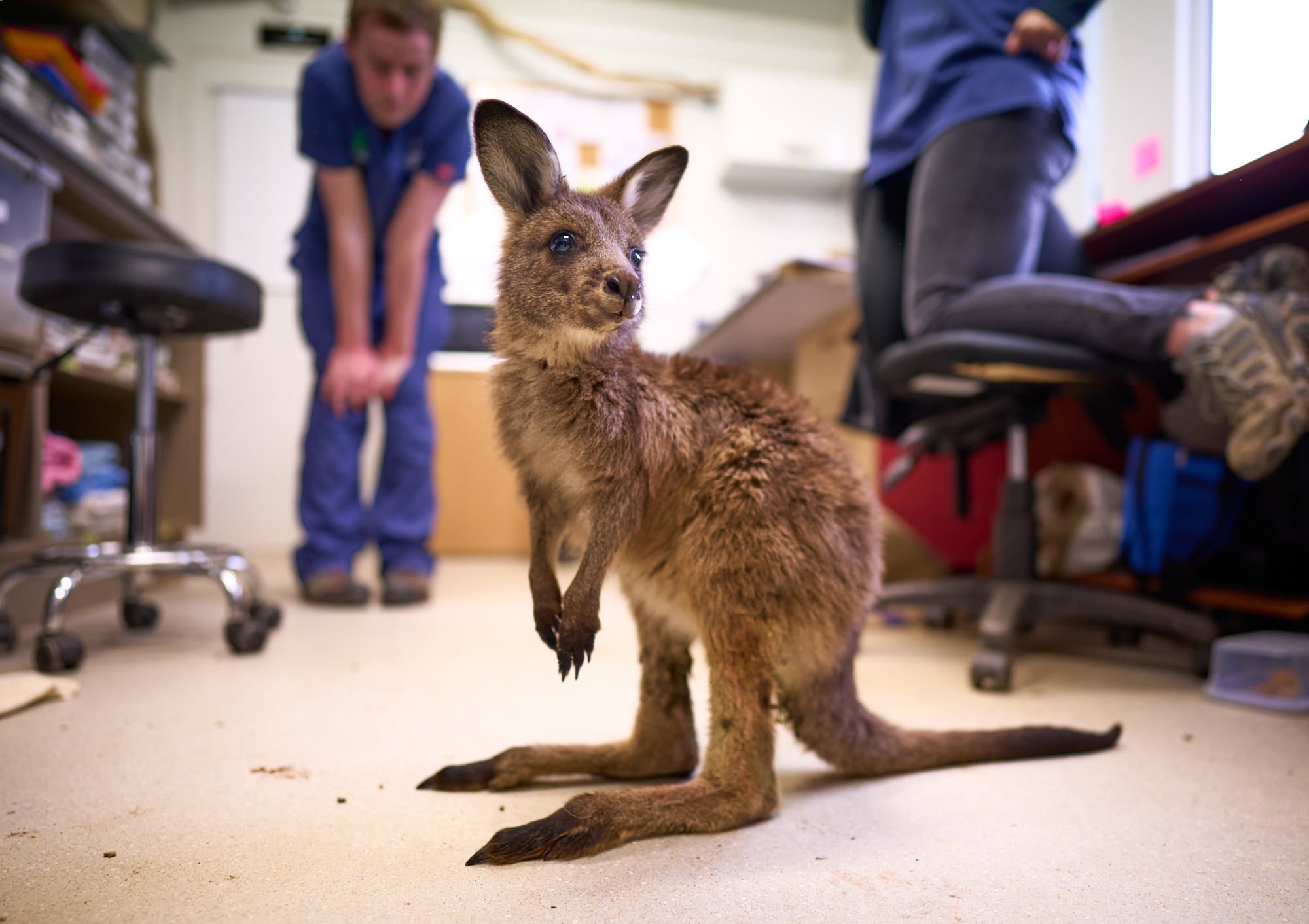
A forester kangaroo being conscious assessed by the Bonorong Wildlife Hospital team in Tasmania. Photo by Michael Eastwell. Sony Alpha 1. Sony 24mm f/1.4 G Master. 1/250-sec., f/1.4, ISO 500
Sony 70-200mm f/2.8 G Master II: This lens largely bridges the gap in my line up, especially when I pair it with the Sony 1.4X teleconverter (giving it a maximum focal length of 280mm). It has exceptional performance wide open, it’s incredibly lightweight and also extremely flexible for photographing subjects up close or far away. Finally, I love that it has an internal zoom!

Iberian Ibex performing their usual acrobatics on the rock face of Torcal de Antequera, Spain. Photo by Michael Eastwell. Sony Alpha 1. Sony 70-200mm f/2.8 G Master II. 1/250-sec., f/4, ISO 320
Sony 16-35mm f/2.8 G Master: I occasionally use this lens for landscapes but it has largely become used for my camera trapping projects these days. So, its main purpose now is for those occasions when 24mm isn’t wide enough to cover my surroundings or I happen to be using the 24-105mm G for something else.
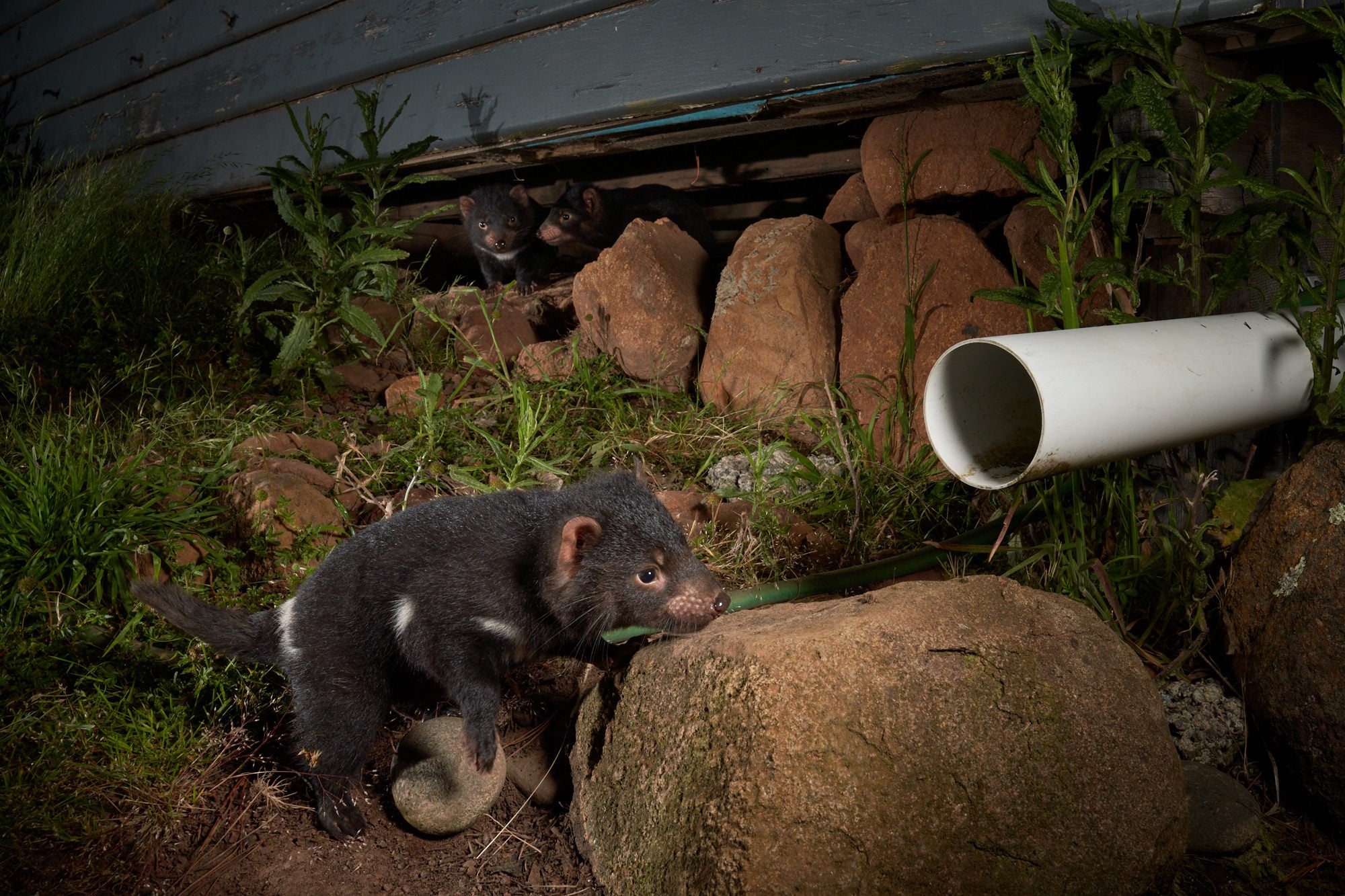
Juvenile Tasmanian devils adventure from their den beneath a residential property south of Hobart. Photo by Michael Eastwell. Sony Alpha 7R IV. Sony 16-35mm f/2.8 G Master. 1/250-sec., f/13, ISO 320.
Accessories
Sony 1.4X Teleconverter: I absolutely love this teleconverter! I am able to combine it with either my Sony 70-200mm f/2.8 G Master II zoom or my Sony 400mm f/2.8 G Master prime. It doesn’t hinder the performance of the lens whatsoever and is just as sharp.
Thermal Imaging Camera: This tool has been a game changer for my recent projects. Whilst I have mainly been working with nocturnal species lately, this digital thermal imaging camera lets me better understand the movements of the surrounding wildlife day or night, from distances as far away as 800m! I’ve also used it to help locate a sick koala that needed help from wildlife experts.
Cleaning Products: I keep a rocket blower, cleaning fluid and cloth handy with me anywhere I travel.
Trail Cameras: Trail cameras are an essential tool for understanding the movements of wildlife. No glow cameras such as this one use IR LED’s and are therefore best for nocturnal animals, as they can go completely undetected.
Camtraptions PIR V3: A fantastic product and a must have for any photographer looking to get into remote camera trapping. There’s a huge variety of different parameters and settings you can initiate for almost any application.
Camtraptions Weatherproof Camera Housing: I have used this housing for all my camera trapping projects, they are exceptionally well sealed and have kept all my gear safe.
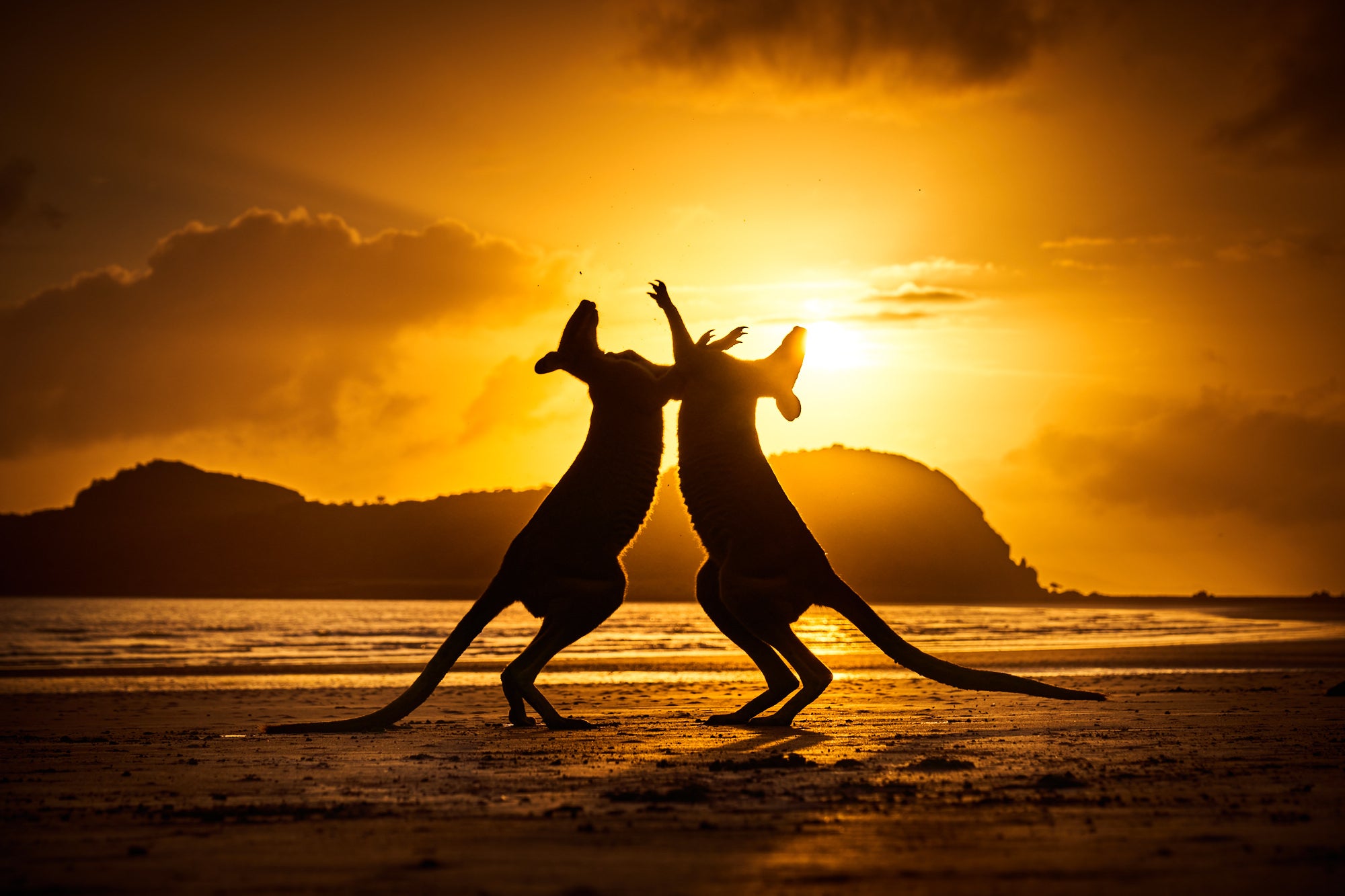
Photo by Michael Eastwell. Sony Alpha 7R IV. Sony 24-105mm f/4 G Master. 1/1600-sec., f/9, ISO 100
Camtraptions Z2 Flash, Transmitter and Receivers: I use this flash for camera trapping as it is both rugged and easy to make quick adjustments in the field. A transmitter and a set of receivers are also necessary accessories to communicate wirelessly with the rest of the system.
Assortment Of Tripods: You can never have enough different types of tripod when you are camera trapping. Each one of these serves a different purpose. I use the 3 Legged Thing 'Bucky’ carbon tripod for its strength, or for situations where I need the camera mounted high off the ground. Joby tripods are brilliant for their flexibility, and the Camtraptions designed tripod is fantastic for long term deployment as you can easily stake it in place.
SSD & Hard Drives: I am very conscious about saving my work with sufficient backups, just in case of a disaster. I will typically use two WD Passport drives, one as a primary and the second as a backup. Then I utilize the SanDisk Extreme SSD and cloud storage to backup my most important files again, just so I have multiple safeguards in place.
Lens Coat For Sony 400mm f/2.8 G Master: I love the crystal white finish of the Sony 400mm f/2.8 G Master but it can sometimes draw too much attention in certain settings. The lens coat simply helps make it that bit more subtle when working in the scrub.
ARCA Plates: An indispensable accessory for numerous items in my bag. It enables a much quicker setup to have multiple plates ready to go, whether it be attached to my camera body, lens, flash or camera housing.
See more of Michael Eastwell’s work on Instagram @michaeleastwell.


































